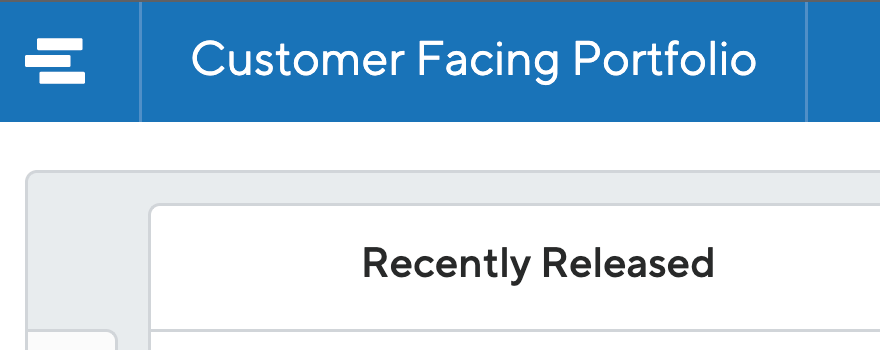As a product manager who now sits on the other side of the table as an executive, I’ve had lots of experience both presenting executive-facing roadmaps and receiving those presentations. I understand how much thought (and possibly anxiety) goes into these roadmap presentations.
They’re the culmination of months of work, customer conversations, and experience. There’s no need to be afraid of your roadmap, either. They’re the capstone for a product manager’s vision and strategy. I want to share my thoughts from being on both sides of the process. I hope it gives you some inspiration to help you present executive roadmaps that align, guide, and facilitate the right conversations. And of course, to help you deliver a better product to your customers.
Mistakes I’ve Seen When Presenting Executive Roadmaps
The most common mistake product managers make in the roadmapping process is assuming they know exactly what to build without building consensus first. Of course, you are the customer expert, but leading with the assumption that you alone know the ideal priorities has consequences that might sabotage your well-intended agenda.
The best way to overcome this is through curiosity and communication. Have informal discussions with executives and other stakeholders before the executive planning meeting. That way, you’ll present a roadmap with the right priorities and align those to the company’s business goals. It will help you to have a seamless review and approval process.
Another key mistake: over-optimism. Believing your team can deliver more done than is realistic sets everyone up for disappointment in future planning meetings. If you must create a roadmap with delivery dates, try to keep broad timeframes such as quarterly. Things are always more complicated and take longer than you and your team think, right? It will help your cause if you educate executives over time to know that you can only estimate fuzzy delivery dates and that priorities will certainly shift.
How to Present Your Executive Roadmap
Delivering a winning roadmap presentation to the executive team isn’t just about the hour or so you get in the conference room. It takes a combination of preparation, execution, and follow-up to get your plans blessed and leave a room of satisfied and confident stakeholders in your wake.
What to do before the roadmap presentation
With so much focus on the roadmap itself, many people overlook one of the fundamental secrets to success: laying the groundwork for when you present your executive roadmap.
The goal of a roadmap presentation isn’t to wow the audience of stakeholders. You’re not trying to knock them off your feet with bold new ideas and surprises. In fact, if stakeholders are seeing things for the first time during your presentation, you’re setting yourself up for failure and frustration instead of praise. A big reveal during a roadmap presentation puts everyone on the defensive and opens yourself up for a debate of whether it’s the right thing to build
Alternatively, prepare everyone in advance for what they’re going to see. Build enough support and consensus that the presentation itself is an official sign-off opportunity.

Continuous communication and conversation
Remove the element of surprise and set the stage for broad acceptance and support by maintaining a dialogue with each stakeholder in advance of the presentation. You want each person to be familiar and comfortable with each item on the roadmap. Schedule time with each stakeholder at least a couple of weeks in advance.
You can most effectively get alignment by linking each item back to the overarching business goals guiding the prioritization and roadmapping process. Don’t tell people that something’s essential—explain why it’s crucial – why it will add customer value or delight customers in some way. Then justify its priority and a rough timeline.
Moreover, remember that these should be two-way conversations. The aim is to solicit feedback from your stakeholders at this stage. Again, curiosity goes a long way. Give them enough time to solicit feedback from their own organizations.
While you may not agree with everything you hear, you’ll have the opportunity to incorporate their suggestions when warranted. Ideally, any dissent or open issues are dealt with and resolved well before everyone gathers together for the actual presentation.
Set the agenda
The objective of an executive roadmap presentation is to get their approval. Your agenda should reflect that. Provide enough context about the strategic goals to set things up and then efficiently communicate the elements of the roadmap itself. Address any outstanding issues or questions that require the entirety of the executive team to settle. Finally, get a solid green light to move forward (or particular action items if they’re not yet ready to provide that).
Your slides or visual aids should move the conversation along accordingly, with a firm eye on the clock as you go. You only have so much time with the entire group assembled, so stick with the important topics and table everything else.
Scope it out
A quick way to reduce your credibility is to predict specific ship dates. As a product manager, you’re only one input into the development effort. You and your engineering team may also be unaware of dependencies that can impact a schedule.
Do your homework, huddle up with tech leads, and develop rough estimates for each initiative (and have an idea of the minimal version for each one). Preparing this information will prevent you from overpromising and under-delivering. Plus, it’s helpful when you’re prioritizing. It might also come in handy during preliminary conversations with executives (or during the meeting itself) if there’s a request to reshuffle some things.
During the Roadmap Presentation
The main event is all about meeting executives wherever they are. They are not obsessing over your product roadmap. They’re trying to figure out how to achieve the business goals and want to see how your roadmap helps get them there. Show them.
Keeping the strategic goals top-of-mind helps create and deliver a productive and successful roadmap presentation. Stakeholders want to walk away confident in the path you’ve plotted and excited to see your plans come to fruition.
The power of a visual
Using graphics and pictures to connect the roadmap to the rationale behind it is helpful. It ties the initiatives in the roadmap to actual customer value, business goals, and meeting real needs.
Big picture thinking
Executives have a lot on their plates and generally, try to stay as high level as possible. While you might want to take a deeper dive into the platform details with the CTO or the new messaging opportunities with the head of marketing, this isn’t the forum for those interactions.
Those more specific conversations can take place before or after the presentation itself. This meeting is all about consensus, buying in, and signing off. Sticking to the big picture avoids thorny topics or detours that might lose the audience or make them question if the plan is fully baked.
Levels of certainty
Product managers aren’t psychics, so every roadmap item sits somewhere on the spectrum between “definitely going to happen” and “definitely a possibility.” However, without the proper context, executives will view everything on there as equals when it comes to delivery expectations. Unfortunately, people hear what they want to hear.
Don’t be afraid to acknowledge that there are unknowns. Communicate your level of certainty for each initiative during the presentation.
There are two dimensions to this. The first is more prominent, in that the further out you go, the less certain things are for everyone. You can mitigate this by creating roadmaps that don’t extend as far into the future. However, beyond that, there may be uncertainties driven by things other than the calendar.
There may be unknowns lurking, such as dependencies, regulatory issues, expected new technologies, or customer commitments. If these could impact the roadmap and leave you less certain about some items, be sure to call that out. Product managers will often color code or identify roadmap initiatives based on how positive they are that it will all fall into place.
Tie everything to business goals
This audience cares about top-line business goals. While they may not embrace a “by any means necessary” mentality, they also don’t have time to worry about all the details.
Therefore the context of the entire conversation should be about the KPIs they care about and how the roadmap moves the needle in the right direction. For example, how does a particular feature accelerate growth or decrease churn? How does a roadmap initiative influence progress on a strategic objective?
Your presentation should both ask and answer those sorts of questions, as that’s what interests executives. Everything else is a detail.
There will be questions
If you’ve done an excellent job beforehand, your presentation shouldn’t have a bunch of “gotcha” questions. You’ll already know the hot button issues before the meeting and will have addressed them in previous discussions or during the meat of the presentation.
You, of course, should be asking consensus-building questions during the meeting. And you will likely hear a few different types of questions from executives:
- Clarifications and deeper dives. An executive may want to drill down on a particular element of the presentation. It’s OK to answer, but if it’s going to derail the momentum offer to meet with them later to discuss things in detail.
- A direct challenge. Maybe you didn’t quite have the consensus you thought you did, or perhaps you had a holdout you were hoping would be won over by the crowd. Ask questions to uncover the real concern. Don’t be afraid to let an ally on the executive team chime in with their support.
- An impromptu change request. Despite all your preparatory work, an executive may decide the roadmap review is the time to ask for something to be added, dropped, or swapped. It might be totally valid and based on new information, or it could be a bright shiny object that will fade under a more in-depth examination. In the end, it’s possibly a good idea, but it’s your job to educate them that there are other higher priorities.
After the Presentation
Follow up and follow-through
Chances are you walked away with some sort of to-do list. It could be sharing the roadmap with other parties, further research, providing more data, or clarifying something.
Don’t let those open issues fester; get on them as quickly as possible so they can be closed out. Closing the loop, maintains momentum and shows you’re responsive and were paying attention.
You can also formalize any final decisions by sending out a follow-up email outlining what was decided and the expected next steps. For executives, this is the “speak now or forever hold your peace” opportunity as they realize this roadmap is now ready for execution.
Changes to roadmap priorities are inevitable. Alert the executive team when these changes happen as part of your job. Also, if any of those disruptions require executive input, don’t put things off any longer than necessary. You don’t want to have that hanging over your head for the next meeting.
Finally, if it turns out some of the business goals that drove the prioritization and roadmap planning have evolved, be sure to re-engage with the executive team and grapple with their impact. Don’t assume you should stick with the existing plan.
Product management is hard. But presenting your roadmap to executives is your opportunity to shine and show why you were hired in the first place.
Learn how to build an executive-facing roadmap with these 8 tips.





